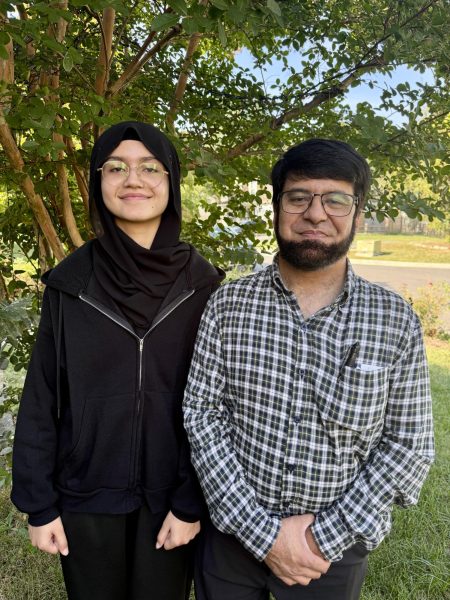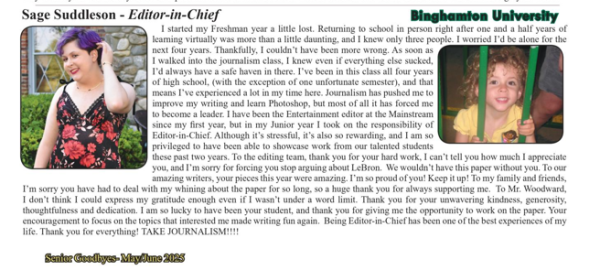A New Generation of Women Reaches for Higher Achievement
Women in the U.S. Battle Stereotypes, Sexism on Path to Success
Women throughout the 20th century battled against gender stereotypes that were created by and fostered by society. These stereotypes restricted women’s progress and limited them from achieving equal or higher success than men.
However, in the 21st century, a new group of young women have taken flight – a group of women who honor the work of those who came before them by blazing a new path for equality and excellence; a path that begins with an increased focus on education. In today’s advanced-degree-driven world, having a bachelor’s degree is often not enough to move ahead, and this message has been received by many young women today who excel in college before moving on to earn a Master’s degree or PhD.
This trend is commendable as it provides not only women, but also an entire nation with examples of people who work hard and use one of our nation’s most valuable resources – education – to live a better, more fulfilling life. However, while we look ahead to a future where women may one day find equal footing with men in the workplace, the board room, or even the Oval Office, one lingering question remains: what prevented women in the United States from previously achieving this type of success?
The answer to this question is quite complex. One must look at the Women’s Suffrage Movement of the 1920’s as, perhaps, the starting point for today’s success stories. Another important period was the Women’s Rights Movement of the 1960’s and 1970’s, which also laid the groundwork for the progress made by the women of today. Even after these two important periods of time and change in the United States, our nation still had limited expectations for young women.
Fast-forward to today and we find a world where young girls are no longer raised to believe that after high school they have to get married and have children. Girls are not expected to grow into adulthood solely to become a stay-at-home mother. Today’s women are encouraged to go to college and then begin to think about their future – a future that may or may not include starting a family right away.
This new way of thinking – these new expectations – are why our nation has seen a growing trend of women earning more advanced degrees. According to Hope Yen’s 2011 article “In a first, women surpass men in advanced degrees,” U.S. Census figures exhibit this substantial progress by women. Yen reports, “among adults 25 and older, 10.6 million US women have master’s degrees or higher, compared with 10.5 million men. Measured by shares, about 10.2 percent of women have advanced degrees compared with 10.9 percent of men — a gap steadily narrowed in recent years.”
Yen’s article also details the increase in the gap between women and men in earning bachelor’s degrees – an area where women passed men in 1996. Yen notes that “when it comes to finishing college, roughly 20.1 million women have bachelor’s degrees, compared with nearly 18.7 million men — a gap that has remained steady in recent years.”
However, one area – according to the census figures – where women still trail men is in professional subcategories such as business, science, and engineering. This parallels the gap in pay that men and women receive, which continues to represent a traditional inequality between men and women. According to the census figures reported by Yen, “…women with full-time jobs now make 78.2 percent of what men receive, up from about 64 percent in 2000.”
While these statistics accurately depict a new generation of high-achieving women, they don’t exactly provide an idea of how women achieved their goals, the steps they took to get there, and why they chose to work toward such advanced degrees. However, one person who can provide very personal insights into this progress is Paint Branch Principal Dr. Myriam Rogers, a brilliant woman who earned her doctorate in Education (Ed.D.) while working full-time and raising a young family.
Dr. Rogers earned her bachelor’s degree in chemistry and biology at Bowie State University and then became a chemistry teacher in Baltimore County.
Not long afterwards, Dr. Rogers began working on her master’s degree, which she earned from Bowie State in Secondary Education-Science. According to Dr. Rogers, who was married and had a young son at the time, “The steps in receiving my Bachelor’s and Master’s degree were easy; however, the steps for my Ed.D. were the most challenging.”
When she was working towards her doctorate in Education Leadership and Policy, Dr. Rogers served as the principal at Francis Scott Key Middle School and as a mother to four children. This balancing act was, according to Dr. Rogers, a tough task that required prioritizing. “I had to work, do my job as a principal and a mother, while also making my Ed.D. a main priority,” Dr. Rogers recalls, “and making my Ed.D. a priority was difficult.”
Luckily for Dr. Rogers, she had great support from her family and, although it was difficult, making her doctoral work a main priority paid off. Dr. Rogers recalls that she would work on writing her dissertation on weekends, stay after work to complete research and writing, and even lock herself away in a hotel to focus more attentively on her writing. Through thick and thin, Dr. Rogers achieved her goal, one that puts her in select company as only three percent of all U.S. citizens hold a doctoral degree.
As for how her work and her achievements reflect the future for young women, Dr. Rogers says, “All of these things are possible to those who are willing to work hard.” Dr. Rogers truly believes in education and knows that a quality education is a “game changer.”










































